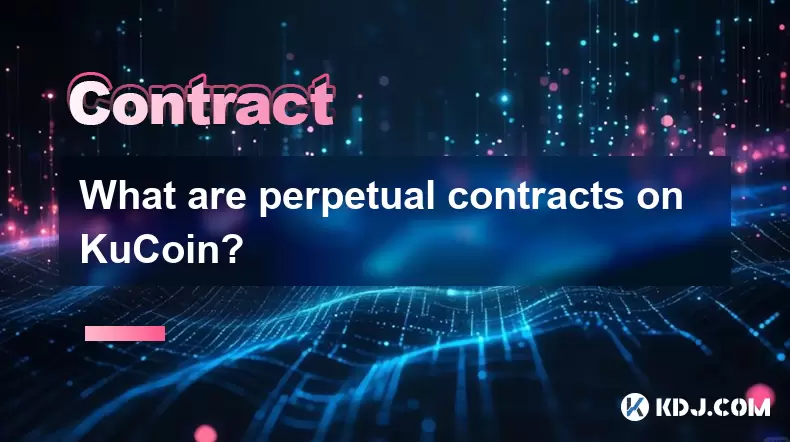-
 Bitcoin
Bitcoin $117700
-0.03% -
 Ethereum
Ethereum $3805
0.49% -
 XRP
XRP $3.098
-1.00% -
 Tether USDt
Tether USDt $1.000
0.03% -
 BNB
BNB $792.8
-1.72% -
 Solana
Solana $177.9
-1.95% -
 USDC
USDC $1.000
0.02% -
 Dogecoin
Dogecoin $0.2202
-1.55% -
 TRON
TRON $0.3278
-2.92% -
 Cardano
Cardano $0.7641
-2.43% -
 Hyperliquid
Hyperliquid $42.21
-2.68% -
 Sui
Sui $3.758
-1.58% -
 Stellar
Stellar $0.4080
-3.21% -
 Chainlink
Chainlink $17.75
-0.33% -
 Bitcoin Cash
Bitcoin Cash $591.8
4.96% -
 Hedera
Hedera $0.2561
-3.09% -
 Avalanche
Avalanche $23.34
-4.24% -
 Litecoin
Litecoin $110.7
1.96% -
 UNUS SED LEO
UNUS SED LEO $8.956
-0.01% -
 Toncoin
Toncoin $3.410
0.79% -
 Ethena USDe
Ethena USDe $1.001
0.03% -
 Shiba Inu
Shiba Inu $0.00001288
-1.82% -
 Uniswap
Uniswap $10.07
-2.06% -
 Polkadot
Polkadot $3.807
-2.27% -
 Monero
Monero $308.2
-2.15% -
 Dai
Dai $1.000
0.03% -
 Bitget Token
Bitget Token $4.521
-0.30% -
 Pepe
Pepe $0.00001134
-1.52% -
 Cronos
Cronos $0.1457
0.65% -
 Aave
Aave $274.9
-2.47%
What are perpetual contracts on KuCoin?
KuCoin’s perpetual contracts offer leveraged trading (1x–100x) with no expiry, using funding rates every 8 hours to align prices—ideal for both short- and long-term crypto traders.
Jul 30, 2025 at 04:42 pm

Understanding Perpetual Contracts on KuCoin
Perpetual contracts on KuCoin are derivative financial instruments that allow traders to speculate on the price of cryptocurrencies without owning the underlying asset. Unlike traditional futures, they have no expiry date, enabling traders to hold positions indefinitely. This makes them especially popular among both short-term and long-term traders. The key mechanism that keeps the contract price close to the spot price is the funding rate, which is exchanged between long and short positions at regular intervals—typically every 8 hours on KuCoin.
How Leverage Works in KuCoin Perpetual Contracts
Leverage allows traders to open positions larger than their available margin. KuCoin offers leverage options ranging from 1x to 100x, depending on the asset and the risk level the trader selects. For example, with 10x leverage, a trader can control a $1,000 position with only $100 of their own funds. However, higher leverage increases both potential gains and losses. Traders must understand that leverage magnifies risk, and if the market moves against them, they may face liquidation. KuCoin provides a liquidation calculator in the trading interface to help users estimate their risk exposure.
- Select the leverage level from the dropdown menu on the trading screen
- Confirm the initial margin requirement based on the selected leverage
- Monitor the maintenance margin to avoid automatic liquidation
Differences Between Isolated and Cross Margin Modes
KuCoin offers two margin modes for perpetual contracts: isolated and cross. In isolated margin, the margin for a position is fixed and separate from the rest of the account balance. This means losses are limited to the allocated margin, making it ideal for risk management. In contrast, cross margin uses the entire account balance as collateral, which can reduce the chance of liquidation but exposes more funds to risk.
- Isolated margin: Set a specific amount of margin for each trade; risk is capped
- Cross margin: Entire balance acts as margin; higher flexibility but broader exposure
- Switch between modes directly in the trading interface before opening a position
Step-by-Step Guide to Opening a Perpetual Contract on KuCoin
Opening a perpetual contract on KuCoin is straightforward once you understand the steps. First, ensure your account has sufficient funds in the designated margin currency (USDT or BTC). Navigate to the Futures section, select the desired contract (e.g., BTC/USDT), and choose your preferred leverage and margin mode.
- Click “Futures” from the KuCoin homepage
- Choose a contract pair (e.g., ETH/USDT Perpetual)
- Set leverage using the slider or input box
- Select margin mode: isolated or cross
- Enter the order size and choose order type (market, limit, stop-market, etc.)
- Review the estimated liquidation price and click “Buy/Long” or “Sell/Short”
Each step must be confirmed carefully, especially when setting leverage and margin mode, as these settings directly affect risk exposure.
Funding Rate and Its Impact on Perpetual Positions
The funding rate is a periodic payment exchanged between long and short traders to keep the contract price aligned with the underlying spot price. On KuCoin, this rate is updated every 8 hours—at 00:00 UTC, 08:00 UTC, and 16:00 UTC. If the funding rate is positive, longs pay shorts; if negative, shorts pay longs. This mechanism prevents prolonged price divergence and ensures market efficiency.
- Check the current funding rate displayed on the contract page
- Understand that holding a position during a funding payment incurs or earns fees
- Use the funding calendar to anticipate payment times and adjust positions accordingly
Traders who hold positions long-term must factor in funding costs or earnings as part of their strategy.
Risk Management Tools on KuCoin Futures
KuCoin provides several tools to help traders manage risk in perpetual contracts. These include take-profit and stop-loss orders, which automatically close positions at predefined prices. Additionally, the platform displays real-time liquidation prices based on current market conditions and leverage. Traders can also set trailing stop orders to lock in profits while allowing room for market fluctuations.
- Set stop-loss to limit downside risk
- Use take-profit to secure gains without manual intervention
- Enable trailing stop to follow price trends dynamically
- Monitor liquidation price in the position tab to avoid unexpected closures
These tools are essential for maintaining control over open positions, especially in volatile markets.
FAQs
What happens if my position gets liquidated on KuCoin?
If the market price reaches your liquidation price, KuCoin automatically closes your position to prevent further losses. The system uses an insurance fund to cover any shortfall, and if the fund is insufficient, an auto-deleveraging (ADL) mechanism may reduce positions of profitable counterparties.
Can I change leverage after opening a position?
Yes, you can adjust leverage at any time before the position is closed. However, changing leverage affects your margin and liquidation price. KuCoin allows this adjustment in the position tab without closing the trade.
Is there a fee for opening or closing perpetual contracts on KuCoin?
Yes, KuCoin charges a taker fee when you close a position using a market order and a maker fee if your order sits on the order book. These fees vary based on your 30-day trading volume and whether you hold KCS (KuCoin Shares).
How do I check my funding payments on KuCoin?
Go to the “Futures” section, click “Account,” then “Funding Records.” Here, you’ll see a detailed log of all funding payments received or paid for each position, including timestamps and amounts.
Disclaimer:info@kdj.com
The information provided is not trading advice. kdj.com does not assume any responsibility for any investments made based on the information provided in this article. Cryptocurrencies are highly volatile and it is highly recommended that you invest with caution after thorough research!
If you believe that the content used on this website infringes your copyright, please contact us immediately (info@kdj.com) and we will delete it promptly.
- Retail, Crypto, Visibility: Decoding the Signals in Today's Market
- 2025-07-31 12:31:08
- Bitcoin, Altcoin Selloff, and the FOMC Decision: A Crypto Market Rollercoaster
- 2025-07-31 12:35:33
- Cold Wallet vs. MetaMask: A Crypto Wallet Revolution?
- 2025-07-31 10:30:57
- Bitcoin Casinos in 2025: Instant Payouts and Welcome Bonuses
- 2025-07-31 10:50:33
- Meme Coins in 2025: Token Burns and the Quest for Moonshots
- 2025-07-31 10:50:33
- Unlocking Value: A Deep Dive into Random Year 1 oz Krugerrand Gold Coins
- 2025-07-31 10:57:21
Related knowledge

Why is my Bitstamp futures position being liquidated?
Jul 23,2025 at 11:08am
Understanding Futures Liquidation on BitstampFutures trading on Bitstamp involves borrowing funds to open leveraged positions, which amplifies both po...

How to report Bitstamp futures for taxes?
Jul 30,2025 at 08:35am
Understanding Bitstamp Futures and Taxable EventsWhen trading Bitstamp futures, it’s essential to recognize that these financial instruments are treat...

Does Bitstamp offer inverse contracts?
Jul 23,2025 at 01:28pm
Understanding Inverse Contracts in Cryptocurrency TradingIn the realm of cryptocurrency derivatives, inverse contracts are a specific type of futures ...

What is the difference between futures and perpetuals on Bitstamp?
Jul 27,2025 at 05:08am
Understanding Futures Contracts on BitstampFutures contracts on Bitstamp are financial derivatives that allow traders to speculate on the future price...

How to find your Bitstamp futures trade history?
Jul 23,2025 at 08:07am
Understanding Bitstamp and Futures Trading AvailabilityAs of the current state of Bitstamp’s service offerings, it is critical to clarify that Bitstam...

Can I use a trailing stop on Bitstamp futures?
Jul 23,2025 at 01:42pm
Understanding Trailing Stops in Cryptocurrency TradingA trailing stop is a dynamic type of stop-loss order that adjusts automatically as the price of ...

Why is my Bitstamp futures position being liquidated?
Jul 23,2025 at 11:08am
Understanding Futures Liquidation on BitstampFutures trading on Bitstamp involves borrowing funds to open leveraged positions, which amplifies both po...

How to report Bitstamp futures for taxes?
Jul 30,2025 at 08:35am
Understanding Bitstamp Futures and Taxable EventsWhen trading Bitstamp futures, it’s essential to recognize that these financial instruments are treat...

Does Bitstamp offer inverse contracts?
Jul 23,2025 at 01:28pm
Understanding Inverse Contracts in Cryptocurrency TradingIn the realm of cryptocurrency derivatives, inverse contracts are a specific type of futures ...

What is the difference between futures and perpetuals on Bitstamp?
Jul 27,2025 at 05:08am
Understanding Futures Contracts on BitstampFutures contracts on Bitstamp are financial derivatives that allow traders to speculate on the future price...

How to find your Bitstamp futures trade history?
Jul 23,2025 at 08:07am
Understanding Bitstamp and Futures Trading AvailabilityAs of the current state of Bitstamp’s service offerings, it is critical to clarify that Bitstam...

Can I use a trailing stop on Bitstamp futures?
Jul 23,2025 at 01:42pm
Understanding Trailing Stops in Cryptocurrency TradingA trailing stop is a dynamic type of stop-loss order that adjusts automatically as the price of ...
See all articles

























































































